

 |
The Farnsworth
Invention: Fact -v- Fiction
|
 |
Act I, Scene 5: In which RCA sets out on its quest for global domination |
| The Play |
The Facts
|
|
The next scene begins with a party celebrating the formation of a "patent pool -- a business arrangement between RCA, AT&T and Westinghouse." |
The relationship between the corporate elders of electrical industries -- AT&T, GE, and Westinghouse -- with the new kid on the block -- RCA -- was always an incestuous one. These companies pooled their patents, and then agreed on which businesses each would pursue to exploit those patents. Still there were great rivalries between them over which companies would control the emerging new field of radio broadcasting.
|
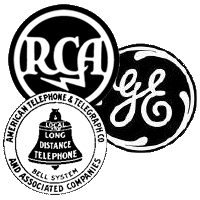 |
| As the party winds down, Sarnoff tells his new secretary that RCA will be broadcasting a big prize fight between Jack Dempsey and a Georges Carpentier . | On July 2, 1921 the Demspey - Carpentier prize fight was one of the seminal events proving the wide appeal of radio broadcasting. The timelines of the two stories are slightly out of sync here, since the Farnsworth story is already up to 1926. | 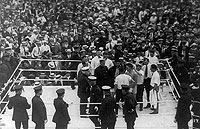
The crowd gathers for the big fight July 2, 1921 |
| An exchange ensues between Sarnoff and James Harbord about AT&T selling commercial time on its radio station WEAF. Sarnoff objects to AT&T running its station "like a whore house." Sarnoff argues against the commercialization of radio. | Sarnoff believed initially that the purpose of broadcasting should be to simply sell radios, and that the costs of the programming should be paid from a tax on the sales of radio sets. AT&T's president Walter Gifford had a whole different idea. Sarnoff had other, more personal reasons for his contempt for Gifford. | 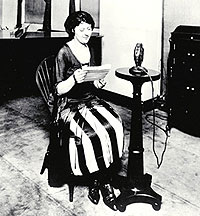 Announcer Helen Hahn in the WEAF studio, New York, 1922. |
| When Sarnoff's wife Lizette asks him how long this feud with AT&T is going to last, Sarnoff answers "17 years, because that's how long patents last..." | It's not clear what the life term of a U.S. patent has to do with this particular dialog; it is important to note, however, that the 17 year life of a patent is extended for as long as the award a patent is contested in the courts. | |
Lizette Sarnoff asks her husband about Vladimir Zworykin's work on something called a "kinescope." Sarnoff explains that the device receives a "light image" the way a radio set receives sound. There is only one catch, "it doesn't work." But when it does work, Sarnoff insists, it will be invented by somebody working for RCA. |
"Kinescope" is the name that has been applied since the 1920s to a cathode ray tube (CRT) television display. But if this scene is taking place in 1921, Vladimir Zworykin had just started working for Westinghouse, and would not start work on a CRT display for RCA for another eight years. The kinescope - the receiving device that turns electricity back into light-- is the easy side of the television equation. The hard part is the camera, converting light into electricity. And Zworykin didn't a device that could do that before 1930. |
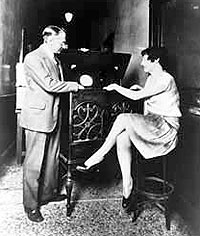 Zworykin with a prototype kinescope television receiver, ca. 1929 |
Want the whole story? Read a Book! |
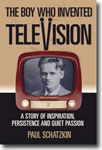 The Boy Who Invented Television A Story of Inspiration, Persistence, and Quiet Passion by Paul Schatzkin |
|